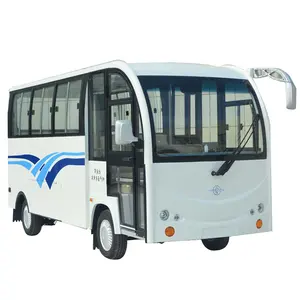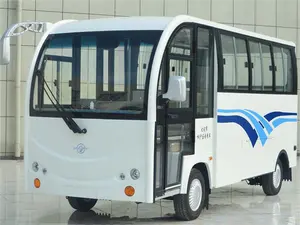
All categories
Featured selections
Trade Assurance
Buyer Central
Help Center
Get the app
Become a supplier

(1116 products available)





































Mini buses come in various types, including the following:
Passenger Mini Buses:
They are the most common types of mini buses, which are utilized for public transport and hotel shuttles. Besides, they are available in various configurations, which include accessible vehicles and luxury shuttles.
School Mini Bus:
They are mostly used in the educational sector for transporting students. They are designed with safety standards such as reinforced sides and roof structures. They are also equipped with safety equipment such as emergency exit hatches and first aid kits.
Corporate Mini Buses:
They are mainly used for corporate transportation services such as airport transfers and business events. They are designed in a professional manner and are often equipped with amenities such as Wi-Fi, refreshments, and reclining seats.
Wheelchair Accessible Mini Bus:
They are designed for transporting passengers with disabilities. They are equipped with accessibility features such as ramps, lift systems, and designated spaces for wheelchairs.
Luxury Executive Mini Bus:
Usually, luxury executive minibusses are designed for corporate transport services. They are designed luxuriously and equipped with amenities such as climate control, entertainment systems, and reclining business seats.
Tourist Mini Bus:
They are used for tourist transport services such as sightseeing and travel agencies. They are often equipped with amenities such as on-board guides, audio systems and comfortable seats.
Custom Mini Bus:
They are designed and constructed to meet specific requirements such as mobile medical clinics, mobile libraries, and other specialized service vehicles.
The specifications of any vehicle, including the mini buss, are essential for business owners to make informed decisions. Here is a breakdown of mini-bus specifications:
Model and brand name
It is the name by which the mini bus is known, and it corresponds to the brand that manufactures it.
Seating capacity
This refers to the maximum number of passengers the mini bus can carry. It is significant for transport businesses, as it determines the capacity of the service offered.
Engine power
The power of the engine is measured in horsepower (HP) or kilowatts (kW) and is relevant for the performance and load capacity of the mini bus.
Fuel type
This is the type of fuel the engine uses. Mini buses generally use gasoline or diesel as fuel.
Transmission
The transmission is the mechanism that transfers the engine's power to the wheels. Mini buses may have manual or automatic transmissions.
Dimensions
The dimensions include the length, width, and height of the mini bus, as well as its weight. The dimensions and weight of the vehicle can influence its handling, stability, and load capacity.
Security system
It is the set of devices and systems designed to protect the passengers and the mini bus. Security systems can include alarms, anti-theft locks, and surveillance cameras.
Comfort and technology
These include features such as air conditioning, heating, sound system, USB ports, and Wi-Fi connection.
Here are some tips to keep a mini-bus in good condition:
Maintenance schedule
It is vital to follow the maintenance schedule recommended by the manufacturer of the mini bus. Carrying out periodic inspections and maintenance at the indicated intervals is essential to guarantee optimal operation and prevent breakdowns.
Tire care
Tires are a critical safety and performance element. Keeping them in good condition, checking their pressure regularly, and replacing them when their wear limit is reached are essential actions to ensure safe driving and efficient fuel use.
Brakes
Brakes are a fundamental security element in mini buses. Checking brake pads, brake discs, and brake fluid regularly is essential to ensure proper braking and avoid accidents.
Engine care
Following the recommended guidelines for engine care is essential to ensure its optimal operation. Replacing the oil and oil filter, checking the cooling system, and reviewing the air and fuel filters are crucial actions to guarantee the durability of the engine.
Security
Following the security recommendations of the mini-bus manufacturer is essential to ensure the safety of passengers and the driver. Checking the proper functioning of security belts, the availability of fire extinguishers, and the correct use of safety systems is vital to avoid risks.
Choosing the right mini buss for specific needs can be a daunting task. Here are some factors to consider when choosing a mini bus:
Purpose
It's essential to consider the purpose the mini bus is intended for. Is it for public transport, hotel shuttle services, or airport transfer services? Different purposes will require different mini bus specifications.
Capacity
Capacity is another aspect that should be considered when choosing a mini bus. Determine the number of passengers to be transported. Mini buses have different seating capacities ranging from 8 to 30 seats.
Budget
Set a budget for the mini bus. Consider the purchase price, insurance, maintenance, fuel costs, and financing options. Having a budget will help in choosing a mini bus that is affordable.
Features
When choosing a mini bus, features such as luggage space, air conditioning, safety features like ABS brakes, and electronic stability control should be considered.
Fuel efficiency
Another aspect that should be considered when choosing a mini bus is fuel efficiency. Compare the fuel consumption of different mini bus models. Take into consideration the route and distance that will be covered frequently.
Brand and model
Choose a reputable brand and model that is known for reliability, durability, and good after-sales service. Research and read reviews about different mini bus models to find the one that suits needs.
Comfort and convenience
Consider the comfort and convenience of the mini bus. Features such as comfortable seats, adequate legroom, and mini buses with infotainment systems and other advanced technology features should be considered.
Safety
When choosing a mini bus, safety should be a priority. The mini bus should have safety features such as ABS brakes, electronic stability control, and a good crash test rating.
Warranty and after-sales service
Choose a mini bus that has a good warranty period and reliable after-sales service. Find out about the warranty period offered by different brands and the availability of service centers in the area.
Test drive
It's important to test drive a few mini bus models before making a decision. A test drive will give a feel of the mini bus and help in assessing factors such as handling, comfort, and visibility.
Replacing a mini bus fuse can be a straightforward DIY task, but it is important to take safety precautions. Always refer to the vehicle's owner's manual for specific instructions. Here are the steps to help replace a mini bus fuse:
1. Gather Materials
Get the right tools for the job. This includes a new fuse (make sure it matches the amp rating of the old one), fuse puller or needle-nose pliers, and safety glasses.
2. Turn Off the Ignition
Before starting, ensure that the vehicle's ignition is turned off. This will help prevent any electrical shorts or damage.
3. Open the Fuse Panel
Locate the mini bus fuse panel in the vehicle. This is usually found under the dashboard, on the driver's side, or in the engine compartment. Once located, carefully open the panel cover.
4. Identify the Blown Fuse
Use the fuse diagram inside the panel or refer to the owner's manual to identify which fuse controls the circuit that is not working. Check if the fuse is blown (a visible break in the wire inside the fuse, or the fuse will be discolored).
5. Remove the Old Fuse
Using a fuse puller or needle-nose pliers, carefully remove the old fuse from the fuse holder. Be sure to remember its orientation (which way it was installed) so that the new fuse can be installed in the same way.
6. Install the New Fuse
Take the new fuse and double-check that it is the same type and rating (in amps) as the one that was removed. Then, carefully insert the new fuse into the fuse holder, making sure it is oriented correctly.
7. Close the Fuse Panel
Once the new fuse is installed, close the fuse panel cover and ensure it is secured properly.
8. Test the Circuit
Turn on the vehicle's ignition and test the circuit to ensure it is working properly. If the new fuse blows immediately or the circuit still does not work, there may be a more significant electrical issue that needs professional diagnosis.
Q1: How many people can a mini bus carry?
A1: A mini bus is smaller than a full-size bus but larger than a van. It is designed to carry between 10 to 30 passengers. The exact number varies depending on the bus model.
Q2: Can a mini bus be used for long-distance travel?
A2: Yes, the mini bus can be used for long-distance travel. It is comfortable and has features such as air conditioning, which are suitable for long journeys. Some have reclining seats and ample legroom, which provides comfort during long trips.
Q3: Is the mini bus fuel efficient?
A3: Yes, the mini bus is fuel efficient compared to larger buses. It has a smaller, more efficient engine. Also, its lighter weight reduces fuel consumption.
Q4: Is the mini bus safe?
A4: Yes, the mini bus is safe. It has safety features such as seat belts, anti-lock brakes, and sometimes airbags. Some mini buses have advanced features like electronic stability control, which enhances safety.
Q5: Can the mini bus be modified?
A5: Yes, the mini bus can be modified. Its interior can be modified to suit specific needs, such as more luggage space or special seats for VIPs. The exterior can also be modified by adding features like a wheelchair ramp or lift.